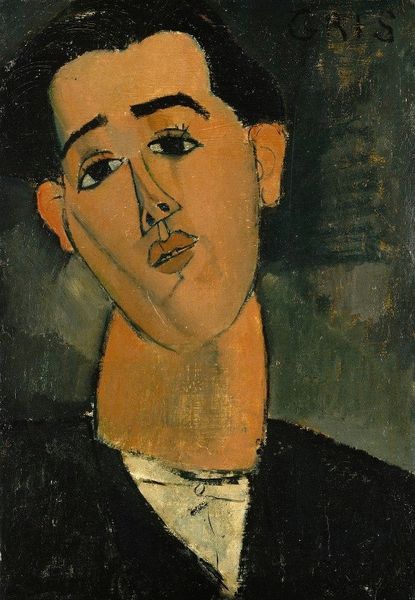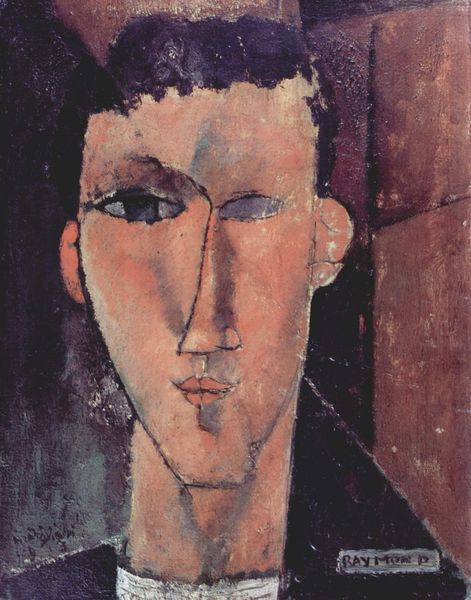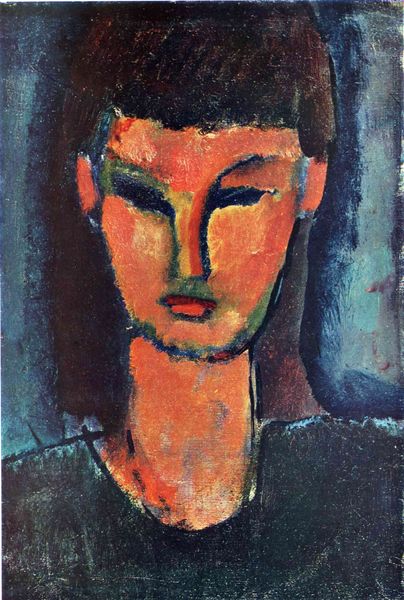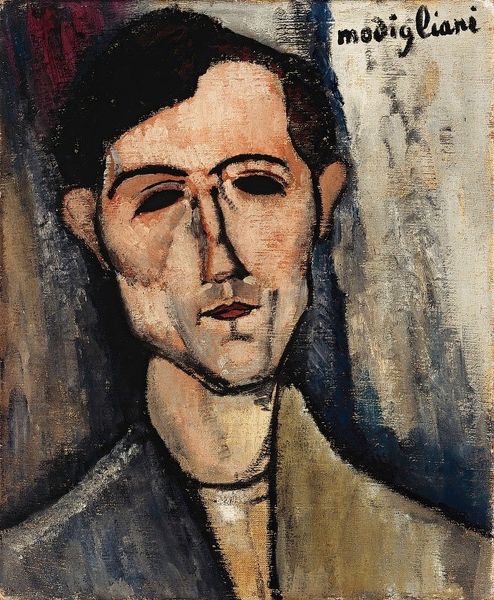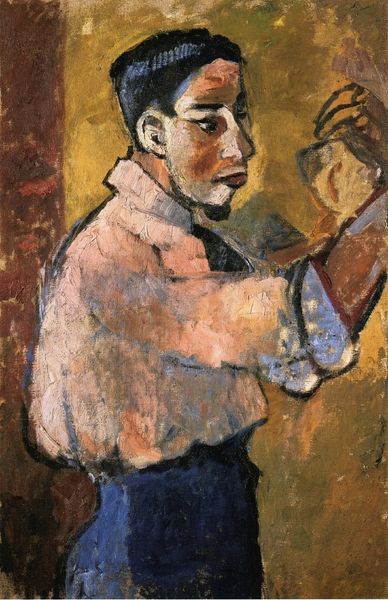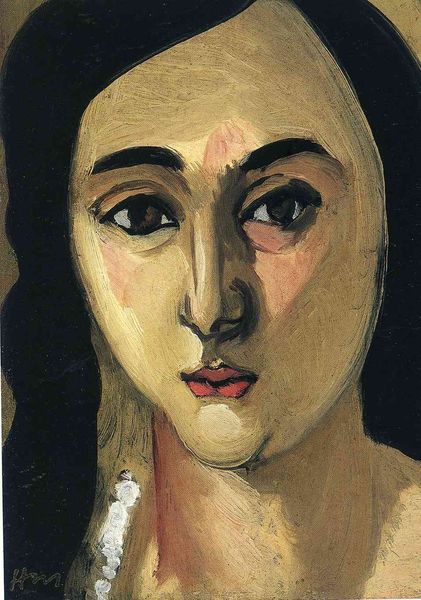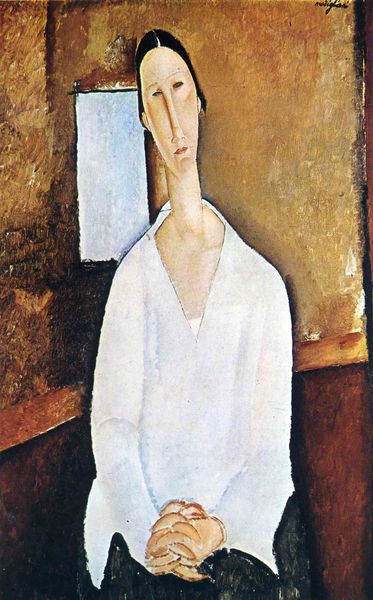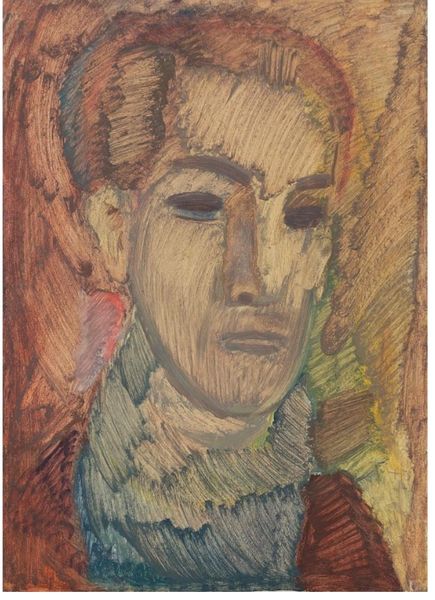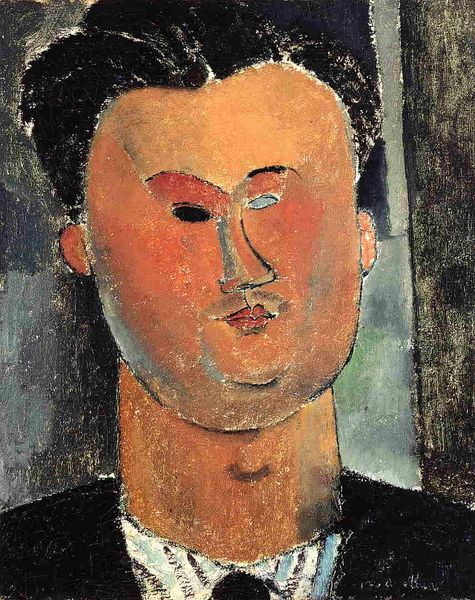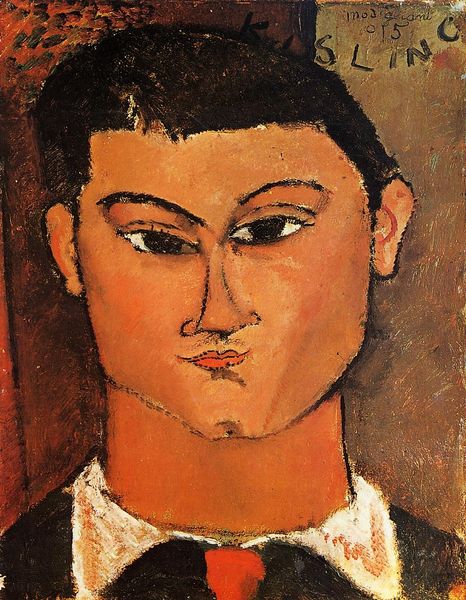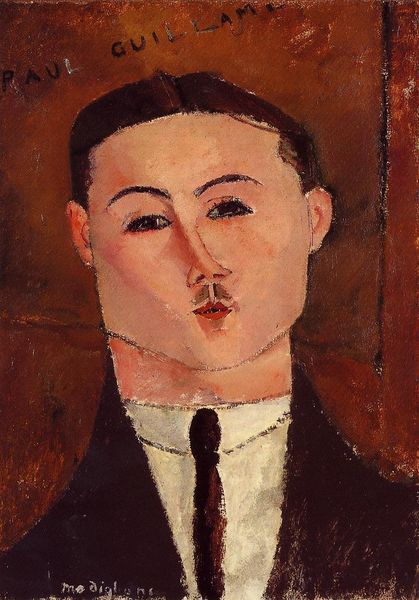
painting, oil-paint
#
portrait
#
painting
#
oil-paint
#
figuration
#
oil painting
#
expressionism
#
italian-renaissance
#
modernism
Dimensions: 35 x 27 cm
Copyright: Public domain
Curator: The portrait we're observing, crafted by Amedeo Modigliani in 1915, presents Celso Lagar, rendered in oil paint. Editor: I'm struck by the rather somber palette. Brown and tan shades dominate, punctuated by that almost blood-red backdrop. It creates an air of brooding intensity, doesn't it? Curator: Indeed. It's important to situate this portrait within the socio-political context of its creation. 1915—Europe was in the throes of the First World War. Montmartre, where Modigliani worked, was teeming with artists, intellectuals, and exiles, each grappling with questions of identity and existence in the face of unprecedented destruction. Editor: So Lagar, as the sitter, becomes part of that narrative of displacement and introspection? His gaze certainly feels weighty. And those almost caricatured features speak volumes too, challenging traditional portraiture’s representation of status and idealization. Curator: Absolutely. Modigliani, drawing on Primitivism and even traces of the Italian Renaissance, distorts and elongates Lagar's features, creating a mask-like quality that raises questions about authenticity and performance. It seems that he might question what "portraiture" really means. It's more than merely likeness, don't you agree? Editor: Precisely. The subject's gaze, averted and seemingly distant, creates a real sense of disconnection, making you consider the space, the relationship, between the artist and subject in this moment in time. The lack of clear setting adds to the ambiguity too, doesn't it? We are not allowed in on what he might represent beyond himself. Curator: He definitely seems caught within forces seemingly greater than his own. Consider Modigliani's own positionality as an Italian Jewish artist working in Paris during this fraught historical moment. These weren't necessarily the halcyon days of acceptance that the avant-garde has now come to represent, and the constraints are everywhere. Editor: Yes, by looking at Modigliani and Lagar as not only portrait artist and sitter, but through a matrix of power relations at work here, you create much greater depth and opportunity for contemporary relevance. Curator: And it underscores art's inherent ability to question established norms. This portrait invites us to consider how representation functions in times of conflict. Editor: The politics of personhood are undeniable here, it pushes the boundaries of selfhood, really. Curator: I appreciate how this artwork reveals the potential for painting to excavate broader issues of social context. Editor: And for a portrait to reflect an historical condition, even with no clues other than the painting.
Comments
No comments
Be the first to comment and join the conversation on the ultimate creative platform.
